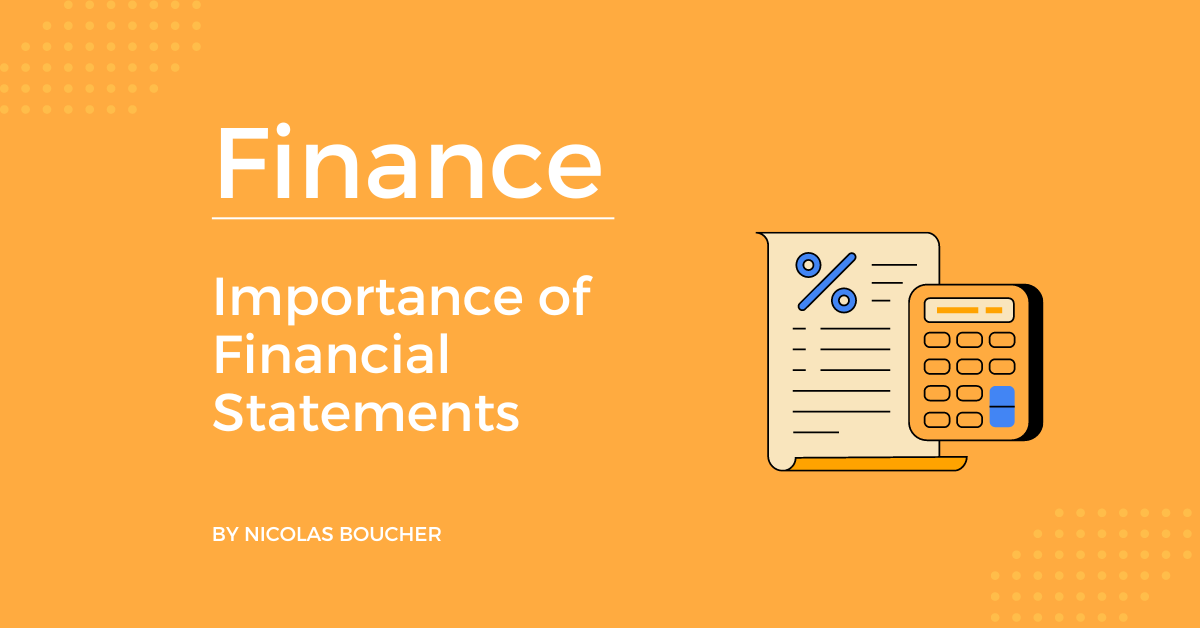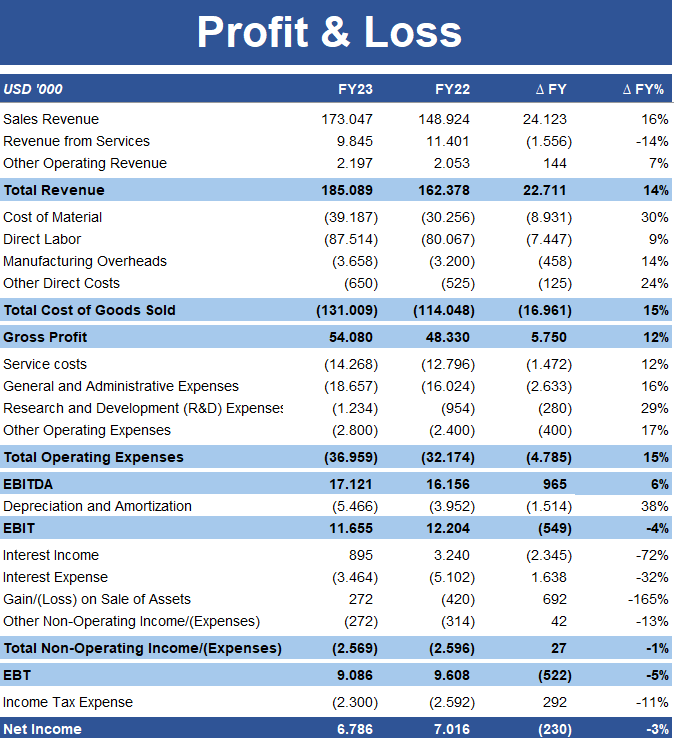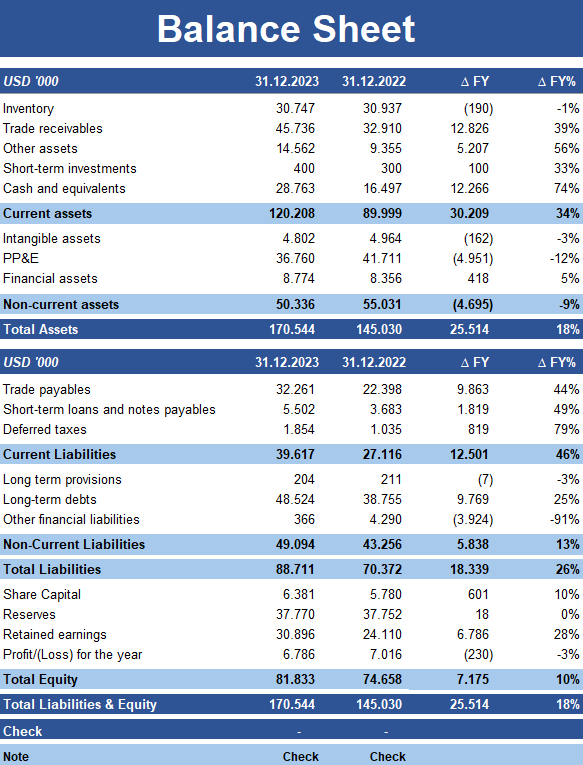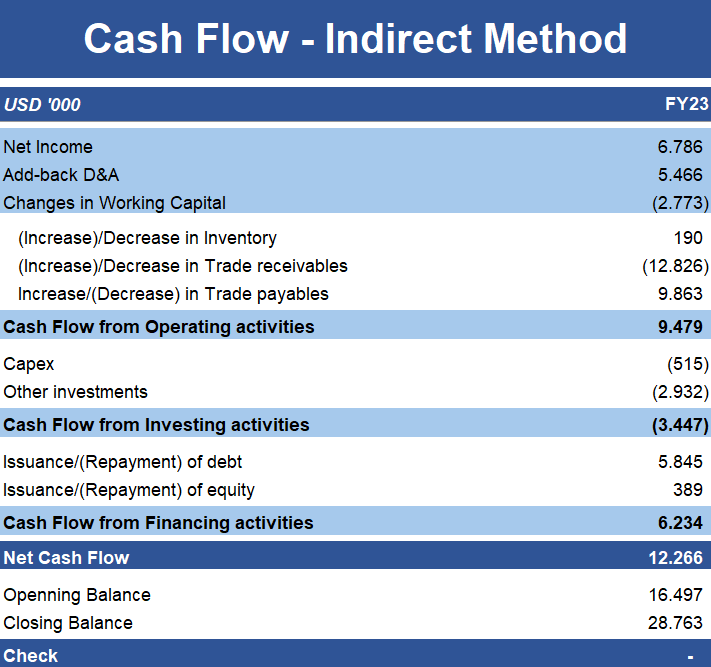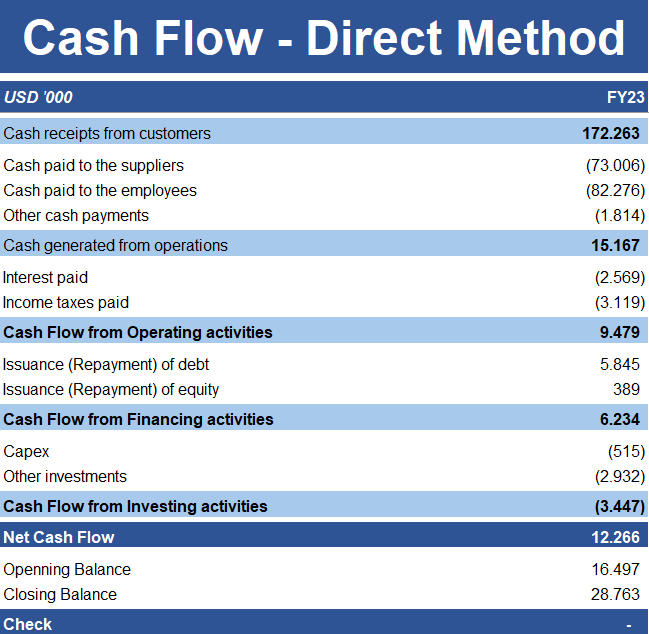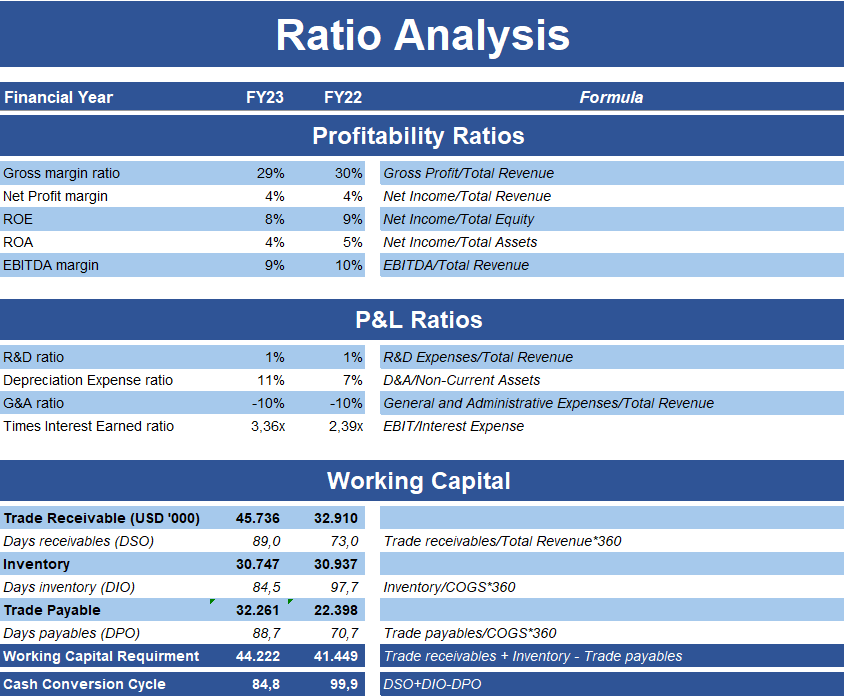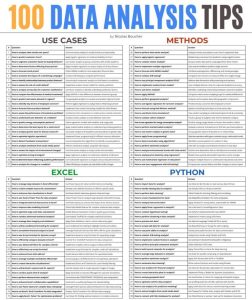Financial statements are the backbone of any business’s financial health assessment.
They provide invaluable insights into a company’s performance, financial position, and cash flow, enabling stakeholders to make informed decisions.
Understanding and analyzing these statements are crucial for anyone involved in business, from managers to investors to creditors.
Table of Contents
Why Are Financial Statements Important?
Financial statements offer a transparent view of a company’s financial activities and conditions.
They help assess profitability, understand financial stability, and make strategic decisions.
These statements are essential tools for investors to evaluate potential investments, for creditors to assess the creditworthiness of a business, and for management to plan and control operations.
Claim Your Financial Statements Free Excel TemplateProfit & Loss Statement
Get your free P&L templateThe Profit & Loss Statement (P&L), also known as the Income Statement, is a financial report that summarizes the revenues, costs, and expenses incurred during a specific period, usually a fiscal quarter or year.
It highlights a company’s ability to generate profit by increasing revenue, reducing costs, or both.
This statement is crucial because it provides insights into a company’s operational efficiency, profitability, and potential for growth.
Investors and management use the P&L to assess financial performance and make strategic decisions to improve profit margins.
Key Components and How to Improve Them:
Total Revenue
-
- Improve Sales Strategies: Implement targeted marketing campaigns, enhance sales training, and optimize pricing strategies.
- Expand Product Lines: Introduce new products or services that meet customer needs.
- Enter New Markets: Explore geographical expansion or new customer segments.
Cost of Goods Sold (COGS)
-
-
- Negotiate Better Terms with Suppliers: Build strong relationships with suppliers to get better prices and payment terms.
- Improve Production Efficiency: Invest in technology and lean manufacturing techniques to reduce waste and increase productivity.
- Reduce Waste: Implement better inventory management and quality control processes to minimize defects and spoilage.
-
Gross Profit
-
- Increase Revenue: As mentioned above, through improved sales strategies, product line expansion, and market entry.
- Reduce COGS: As detailed above, by negotiating better terms, improving production efficiency, and reducing waste.
Operating Expenses
-
- Optimize Administrative Processes: Streamline workflows and reduce bureaucratic overhead.
- Cut Unnecessary Costs: Identify and eliminate non-essential expenses.
- Invest in Technology: Use automation and software to improve efficiency and reduce manual labor costs.
EBITDA and EBIT
-
- Increase Revenues: As discussed, through better sales strategies, product and market expansion.
- Control Operating Expenses: By optimizing processes, cutting unnecessary costs, and investing in technology.
Net Income
-
- Increase Revenue: Implement the strategies mentioned above.
- Reduce Both COGS and Operating Expenses: Use the methods detailed above.
- Minimize Tax Liabilities: Efficient tax planning, such as taking advantage of tax credits, deductions, and deferrals.
Balance Sheet
Get your Balance Sheet templateThe Balance Sheet is a snapshot of a company’s financial position at a specific point in time, detailing its assets, liabilities, and equity.
It is divided into two main sections: assets, which include what the company owns, and liabilities and equity, which represent what the company owes and the residual interest of shareholders.
The Balance Sheet is vital for evaluating a company’s liquidity, solvency, and overall financial stability.
It helps stakeholders understand how well a company can meet its short-term obligations and how efficiently it is using its resources.
Key Components and How to Improve Them
Current Assets
-
- Better Inventory Management: Implement just-in-time inventory systems to reduce holding costs and avoid stockouts.
- Faster Receivables Collection: Use invoice factoring, offer early payment discounts, and enforce stricter credit policies.
- Maintain Adequate Cash Reserves: Monitor cash flow closely and create a buffer for unexpected expenses.
Non-current Assets
-
-
- Strategic Investments: Invest in capital projects that have a high return on investment.
- R&D for Long-term Growth: Allocate funds to research and development to innovate and stay competitive.
- Asset Utilization: Regularly review and dispose of underperforming or obsolete assets.
-
Current Liabilities
-
- Manage Short-term Debt: Refinance short-term debt to long-term debt where possible to improve liquidity.
- Efficient Payables Management: Take advantage of supplier discounts for early payments and negotiate longer payment terms.
Non-current Liabilities
-
- Long-term Debt Management: Refinance at lower interest rates and ensure the debt is sustainable based on cash flow projections.
- Provisioning for Future Obligations: Adequately provision for future obligations like pensions and other long-term liabilities.
Equity
-
- Retain Earnings: Reinvest profits into the business to fund growth rather than distributing all profits as dividends.
- Equity Financing: Consider raising funds through equity to avoid high debt levels and reduce interest expenses.
Cash Flow Statement – Indirect Method
Get your Cash Flow – Indirect Method templateThe Cash Flow Statement using the Indirect Method begins with the net income and adjusts for non-cash items like depreciation, changes in working capital, and other operating activities to calculate the cash generated or used by operating activities.
This statement is important because it reconciles the net income with the cash generated by operations, providing a clearer picture of a company’s cash flow.
It is especially useful for understanding the actual cash inflows and outflows from core business operations, which is critical for maintaining liquidity.
Key Components and How to Improve Them
Operating Activities
-
- Improve Working Capital Management: Optimize inventory levels, streamline receivables collection, and manage payables efficiently.
- Increase Net Income: As discussed, by increasing revenues and reducing costs.
- Reduce Non-cash Expenses: While this is more about reporting, understanding and managing non-cash expenses like depreciation can help in better forecasting cash flows.
Investing Activities
-
- Capital Expenditures: Prioritize investments in projects with high returns.
- Divest Non-core Assets: Sell off assets that are not essential to the core business operations.
Financing Activities
-
-
- Debt Management: Optimize the debt structure to balance between cost and flexibility.
- Equity Financing: Consider raising equity capital to fund growth without increasing the debt burden.
-
Cash Flow Statement – Direct Method
Get your Cash Flow – Direct Method templateThe Cash Flow Statement using the Direct Method directly lists the cash receipts and payments from operating activities, such as cash received from customers and cash paid to suppliers and employees.
Unlike the Indirect Method, it does not start with net income but instead provides a straightforward view of cash flow.
This method is important because it offers a more transparent and granular view of how cash is generated and used in day-to-day operations.
It is particularly useful for businesses that need to closely monitor cash movements to ensure they can meet their obligations.
Key Components and How to Improve Them
Cash Receipts from Customers
-
- Enhance Sales Efforts: Increase sales through better marketing strategies, expanding market reach, and improving customer relationships.
- Efficient Billing and Collection: Implement efficient billing processes and follow up on receivables promptly to ensure timely cash inflows.
Cash Paid to Suppliers and Employees
-
- Negotiate Payment Terms: Work with suppliers to extend payment terms without incurring penalties.
- Control Operational Costs: Manage costs by optimizing procurement processes and implementing cost-saving measures.
- Efficient Payroll Management: Streamline payroll processes and consider outsourcing non-core functions to reduce costs.
Interest Paid and Income Taxes Paid
-
- Debt Management: Refinance high-interest debt to reduce interest expenses.
- Tax Planning: Implement effective tax planning strategies to minimize tax liabilities.
Cash Generated from Operations
-
- Improve Operational Efficiency: Streamline processes, reduce waste, and enhance productivity to increase operational cash flow.
Investing Activities
-
-
- Capital Expenditures: Invest in projects with high returns and long-term benefits.
- Other Investments: Diversify investments to manage risk and optimize returns.
-
Financing Activities
-
- Issuance/Repayment of Debt: Maintain an optimal debt level and manage repayment schedules to ensure financial stability.
- Issuance/Repayment of Equity: Use equity financing for growth initiatives while managing shareholder expectations.
Net Cash Flow
-
- Positive Cash Flow: Ensure that the company maintains a positive net cash flow by balancing inflows and outflows effectively.
Opening and Closing Balance
-
- Cash Management: Monitor cash flow regularly to maintain sufficient cash reserves for operational needs and unexpected expenses.
Key Ratios and How to Improve Them
Profitability Ratios
Profitability Ratios measure a company’s ability to generate profit relative to its revenue, assets, or equity.
These ratios are crucial for assessing how efficiently a company is using its resources to generate profit and provide a basis for comparing profitability with industry peers.
Investors and management rely on these ratios to evaluate the company’s financial health, set performance benchmarks, and make informed investment and strategic decisions.
Gross Margin Ratio
-
- Improve Revenue: Implement better sales strategies and expand market reach.
- Reduce COGS: Negotiating better supplier terms and improving production efficiency.
Net Profit Margin
-
- Increase Revenue and Reduce Costs: Using the methods discussed above.
- Tax Planning: Efficiently managing tax liabilities to retain more profit.
Return on Equity (ROE)
-
- Efficient Use of Equity: Investing in high-return projects and reducing equity dilution.
- Increase Net Income: As detailed above.
Return on Assets (ROA)
-
- Asset Efficiency: Regularly reviewing asset performance and disposing of underperforming assets.
- Increase Net Income
EBITDA Margin
-
- Improve Operating Profitability: Through better revenue generation and cost control.
P&L Ratios
P&L Ratios analyze specific aspects of the Profit & Loss Statement to understand where a company is spending its money and how effectively these expenses contribute to its bottom line.
These ratios are important for dissecting the cost structure of a business and identifying areas where costs can be optimized.
They help management allocate resources more effectively and improve overall profitability.
R&D Ratio
-
- Optimize R&D Spending: Focus on projects with the highest potential return.
- Leverage External Funding: Use grants and partnerships to fund R&D efforts.
Depreciation Expense Ratio:
-
- Asset Management: Dispose of or upgrade obsolete assets to manage depreciation.
- Efficient Asset Utilization: Ensure assets are being used efficiently to generate revenue.
G&A Ratio
-
- Control Administrative Costs: Streamline processes and reduce unnecessary administrative expenses.
Times Interest Earned Ratio
-
- Increase EBIT: Improve operating performance to cover interest expenses.
- Refinance Debt: Lower interest costs through refinancing.
Working Capital Ratios
Working Capital Ratios measure how efficiently a company is managing its short-term assets and liabilities.
These ratios are essential for understanding the liquidity and operational efficiency of a business.
Effective management of working capital ensures that a company can meet its short-term obligations and invest in growth opportunities without the need for external financing.
Trade Receivable and DSO
-
- Improve Collection Processes: Enforce stricter credit policies and use incentives for early payments.
- Use Technology: Implement automated invoicing and payment reminder systems.
Inventory and DIO
-
- Optimize Inventory Management: Use inventory management systems to maintain optimal inventory levels.
- Reduce Lead Times: Work with suppliers to shorten lead times.
Trade Payable and DPO:
-
- Negotiate Better Terms: Work with suppliers to extend payment terms.
- Manage Cash Flow: Ensure sufficient cash flow to meet obligations without early payments.
Working Capital Requirement
-
- Efficient Management: Balance receivables, payables, and inventory to minimize the working capital requirement.
Cash Conversion Cycle
-
- Reduce Cycle Time: Improve efficiency in the cash-to-cash cycle by optimizing receivables, payables, and inventory management.
Liquidity Ratios
Get your free Ratio Analysis templateLiquidity Ratios assess a company’s ability to meet its short-term obligations with its most liquid assets.
These ratios are critical indicators of financial health, especially for creditors and investors who need to know if a company can cover its debts without having to sell long-term assets.
High liquidity ratios indicate a strong ability to meet short-term liabilities, which is crucial for maintaining operational stability.
Liquidity Ratios
Current Ratio and Acid-Test Ratio
-
- Increase Current Assets: Improve cash reserves, receivables collection, and inventory turnover.
- Manage Current Liabilities: Refinance short-term debt to long-term debt where possible.
Cash Ratio
-
- Maintain Adequate Cash: Keep a sufficient cash buffer to meet short-term obligations.
Operating Cash Flow Ratio
-
- Improve Cash Flow from Operations: Enhance net income and manage working capital efficiently.
Leverage Financial Ratios
Leverage Financial Ratios measure the extent to which a company uses borrowed money to finance its operations and growth.
These ratios are important because they provide insights into a company’s financial risk and its reliance on debt.
Understanding leverage is important for assessing the long-term sustainability of a business and its ability to withstand economic downturns.
Debt Ratio and Debt to Equity Ratio
-
- Manage Debt Levels: Maintain a balance between debt and equity financing.
- Reduce Interest Costs: Refinance high-cost debt.
Asset Turnover Ratio
-
- Improve Asset Utilization: Increase revenue through efficient use of assets.
Balance Sheet Ratios
Balance Sheet Ratios analyze various aspects of a company’s financial position to evaluate its stability and efficiency in using its capital.
These ratios are important for understanding how well a company can manage its debts, cover its interest obligations, and generate returns on its investments.
They are key metrics for investors and management to assess financial health and operational efficiency.
Liability Coverage Ratio:
-
- Increase Total Assets: Invest in assets that generate revenue and enhance asset base.
- Manage Liabilities: Control and reduce liabilities through efficient debt management.
Interest Coverage Ratio
-
- Improve EBIT: Enhance operating performance to cover interest expenses.
Return on Capital Employed (ROCE)
-
- Efficient Use of Capital: Invest in high-return projects and manage capital efficiently.
Tangible Net Worth
-
- Increase Equity: Retain earnings and reduce liabilities to improve tangible net worth.
Cash Flow Adequacy Ratio
-
- Improve Cash Flow: Enhance operational cash flow to cover total operating expenses.
Inventory Ratios
Inventory Ratios measure how efficiently a company manages its inventory. These ratios are important because they indicate how well a company is balancing inventory levels with sales demand, which directly impacts cash flow and profitability. Efficient inventory management reduces holding costs and minimizes the risk of obsolescence, contributing to better financial performance.
Inventory Turnover and Days on Hand
-
-
- Efficient Inventory Management: Use just-in-time systems and reduce excess inventory.
- Improve Sales: Enhance sales strategies
-
Closing Thoughts
Financial statements are indispensable tools for assessing a company’s health and making strategic decisions.
They offer a comprehensive view of financial performance, position, and cash flow, enabling stakeholders to understand and manage business operations effectively.
Claim Your Financial Statements Free Excel TemplateFAQ
Q: What is the purpose of the Profit & Loss statement?
A: The P&L statement summarizes a company’s revenues and expenses over a period, showing its ability to generate profit.
Q: How does the Balance Sheet help in financial analysis?
A: The Balance Sheet provides a snapshot of a company’s financial position, detailing assets, liabilities, and equity, essential for assessing liquidity and solvency.
Q: Why are Cash Flow Statements important?
A: Cash Flow Statements track the cash inflows and outflows, providing insights into a company’s operational efficiency and financial health.
Q: What is the significance of ratio analysis?
A: Ratio analysis offers quick insights into various aspects of financial performance, helping compare trends and benchmarks.
Q: How do financial statements aid in decision-making?
A: Financial statements provide detailed financial information, enabling stakeholders to make informed decisions about investments, credit, and management strategies.


